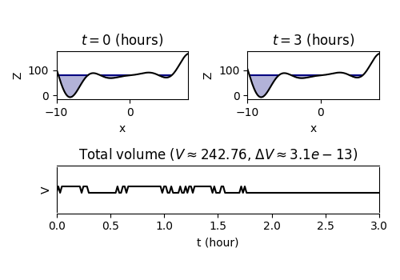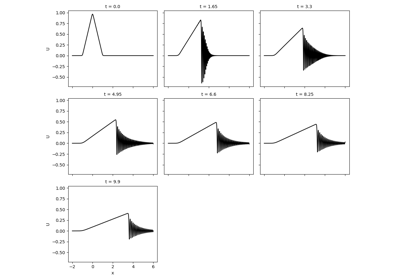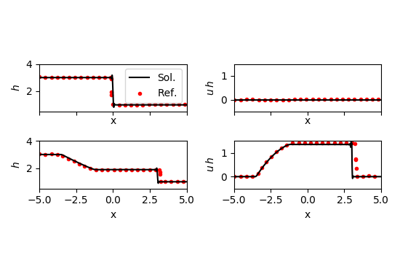Cookbook : scikit-fdiff by examples¶
Benchmarking:¶
All the examples have been run on three different hardware.
Hardware 1: Laptop, Intel(R) Core(TM) m3-6Y30 CPU @ 0.90GHz 4 cpu
Hardware 2: Desktop, Intel(R) Core(TM) i7-3770 CPU @ 3.40GHz 8 cpu
Hardware 3: Workstation, Intel(R) Xeon(R) CPU E5-2630 v3 @ 2.40GHz 32 cpu
They have been obtained a simple gnu time command, and take into account the full script, including model compilation and plotting. The former can add non-neglectible overhead, especially in 2D cases or complex models.
Mesh size |
Hardware 1 |
Hardware 2 |
Hardware 3 |
|
|---|---|---|---|---|
1D KDV |
1000 |
35 sec |
18 sec |
17 sec |
1D Dam break |
1000 |
14 sec |
7 sec |
7 sec |
1D Steady Lake |
500 |
34 sec |
18 sec |
17 sec |
2D Acoustic waves |
256 x 256 |
5 min 38 sec |
3 min 9 sec |
2 min 31 sec |
2D Dam break |
128 x 128 |
1 min 40 sec |
1 min 8 |
55 sec |
The cpu frequency has a huge impact on the performance on every cases, but the number of core has more impact on 2D cases, where the system is big enough to take advantage of the parallelisation.
In these cases, most of the time is spent in the linear system solver. These operation is hard to parallelize, explaining a bad scaling factor.
However, using explicit solver with the numba backend (or a custom cuda backend) will efficiently scale up for non-stiff applications.
Gallery¶

One dimension shallow water, steady lake validation case.



